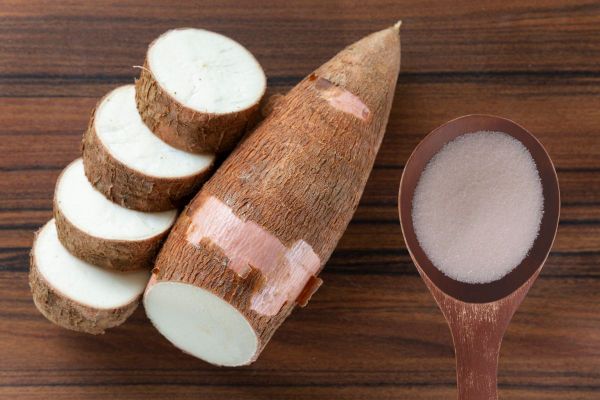
Cassava (also known as manioc or tapioca) is a familiar crop that has played a crucial role in the lives of Vietnamese people for generations. Not only was it a valuable food source during wartime, but today, cassava is also processed into a variety of diverse products, contributing to the agricultural economy and opening up promising export potential.
1. Origins and Growing Regions
Cassava originated in tropical America and was introduced to Vietnam quite early. The cassava plant is particularly well-suited to the tropical monsoon climate, has good drought resistance, and can grow in various soil types, even poor ones.
In Vietnam, cassava is widely cultivated across the country, but primarily concentrated in the following regions:
- Southeastern Vietnam: With its fertile red basalt soil, this is the largest cassava growing region in the country, especially in provinces like Tay Ninh, Dong Nai, Binh Phuoc, and Ba Ria – Vung Tau. Cassava here often yields high productivity and good quality.
- Central Highlands: Provinces such as Gia Lai, Kon Tum, Dak Lak, and Lam Dong also have significant cassava cultivation areas.
- South Central Coast and North Central Coast: Some provinces like Quang Ngai, Binh Dinh, Phu Yen, Thanh Hoa, and Nghe An also have a tradition of growing cassava.
/https://cms-prod.s3-sgn09.fptcloud.com/khoai_mi_bao_nhieu_calo_loi_ich_khi_an_khoai_mi_1_939108a3f4.jpg)
2. Cassava During Wartime: The “Hunger Relief Food”
The role of cassava during the nation’s arduous years of resistance cannot be denied. In a context of food shortages, the cassava plant became the primary source of sustenance for many civilians and soldiers. Boiled cassava, roasted cassava, dried ground cassava… helped millions of people overcome famine and maintain their strength to fight and build the country. Cassava was not just food; it was a symbol of the Vietnamese people’s resilience and determination to overcome hardship.
3. Export Products from Cassava
From a simple tuber, cassava is now processed into many valuable products, meeting the demands of both domestic and international markets:
- Cassava starch (tapioca starch): This is the main and most important product derived from cassava. Cassava starch is widely used in the food industry (confectionery, instant noodles, vermicelli, rice noodles, food additives…), the chemical industry, textiles, paper production, and even in animal feed.
- Dried cassava chips: Used as raw material for animal feed, alcohol production, and other industrial products.
- Ground cassava flour: Used as an ingredient in food processing, especially traditional cakes.
- Modified cassava starch: This is cassava starch that has been processed to alter its properties, making it suitable for more complex industrial applications.
- Processed food products: Cassava rice paper, puffed cassava crackers, cassava noodles, frozen cassava… are increasingly popular.

4. Export Markets
Vietnam is one of the largest exporters of cassava starch and dried cassava chips globally. The main markets for Vietnamese cassava include:
- China: This is Vietnam’s largest importer of cassava starch and dried cassava chips, accounting for a significant proportion of total export turnover.
- Southeast Asian countries: Indonesia, Malaysia, and the Philippines are potential markets for Vietnamese cassava products.
- Europe and North America: These markets have a demand for high-quality cassava starch for the food and non-food industries.
- South Korea, Japan: The demand for cassava starch and processed cassava products is also increasing.
Other articles:
Other agricultural products:


